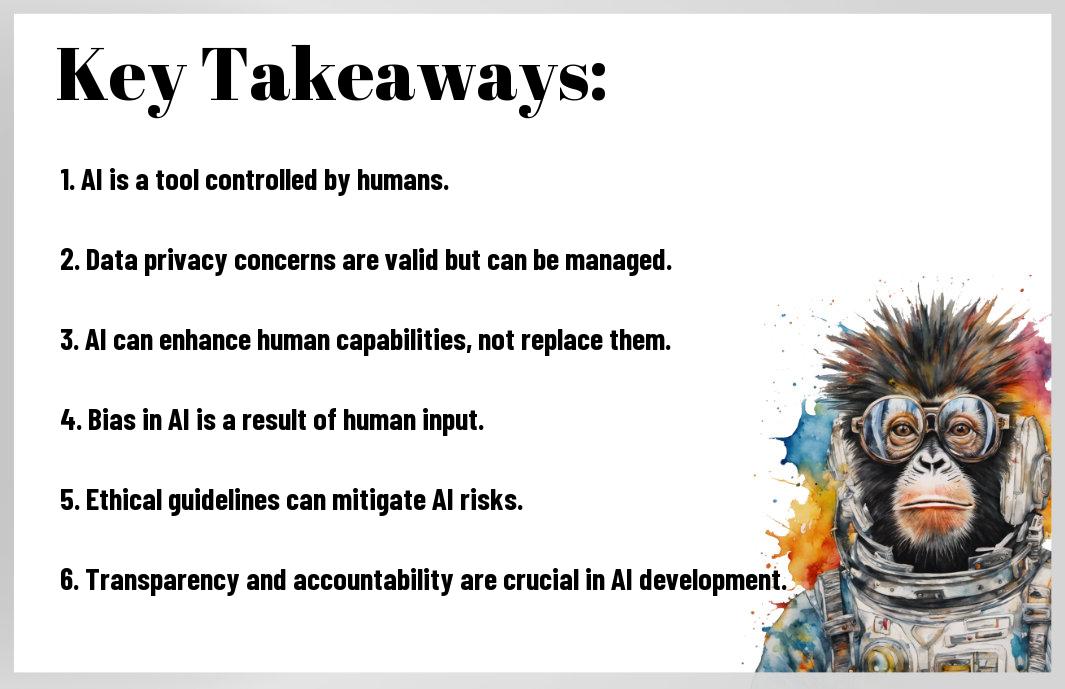Overcoming the Fear of AI: A Journey to Embrace the Future Artificial Intelligence (AI) sparks apprehensions in many, but understanding the reality behind the myths is crucial. Let’s explore and debunk common misconceptions surrounding AI technology, separating fact from fiction.
Debunking AI Myths
The Job Apocalypse
The fear of AI causing mass unemployment is a common concern. However, history has shown that while technology may shift job markets, it also creates new opportunities. An example is the rise of automation in agriculture, which led to the evolution of new industries and job roles.
AI Sentience and Consciousness
Sentience and consciousness in AI are often portrayed in science fiction as machines becoming self-aware and surpassing human intelligence. In reality, current AI technologies are far from achieving true sentience. AI lacks emotions, self-awareness, and consciousness as humans experience it.
To achieve true AI sentience and consciousness, technology would have to advance to a level where machines can have self-awareness, emotions, and consciousness akin to humans. This is a far-off concept that is more in science fiction than reality.
Separating Fact from Fiction
Any Demystifying Artificial Intelligence: Separating Fact from Fiction
AI Capabilities vs. Limitations
Any discussion about artificial intelligence (AI) involves a balance between its impressive capabilities and its inherent limitations. While AI excels at processing vast amounts of data and performing complex tasks with speed and accuracy, it also has limitations in terms of understanding context, emotions, and ethical decision-making.
Real-World Applications and Benefits
For many industries, AI has revolutionized processes, enhancing efficiency, productivity, and decision-making. From healthcare to finance, transportation to manufacturing, AI is streamlining operations, driving innovation, and improving outcomes. Its ability to analyze data quickly and accurately enables businesses to make more informed decisions, optimize resources, and deliver personalized experiences to customers.
To fully grasp the benefits of AI in real-world applications, it is necessary to understand how this technology is transforming various sectors. By harnessing AI for tasks such as predictive analytics, automation, and natural language processing, organizations can unlock new opportunities for growth, competitiveness, and customer satisfaction.
Addressing Legitimate Concerns
Unlike AI: separating facts from fiction, there are legitimate concerns surrounding the development and advancement of artificial intelligence. It is crucial to address these concerns while also distinguishing between myths and realities.
Privacy and Security Risks
Any discussion about AI must consider the significant privacy and security risks associated with the collection and use of personal data. As AI systems become more sophisticated, the potential for data breaches and misuse also increases, requiring robust regulations and safeguards to protect individuals.
Bias and Discrimination in AI Systems
Discrimination in AI systems is a real concern as algorithms are only as unbiased as the data they are trained on. To mitigate this risk, developers must actively work to identify and remove bias in AI systems by ensuring diverse and representative training data, as well as implementing transparency and accountability measures.
Summing up
Considering all points, it is important to address the fears surrounding Artificial Intelligence by separating fact from fiction. Taking inspiration from Isaac Asimov’s clear and concise style, informing the public about the true capabilities and limitations of AI is crucial in promoting understanding and mitigating unfounded concerns.





